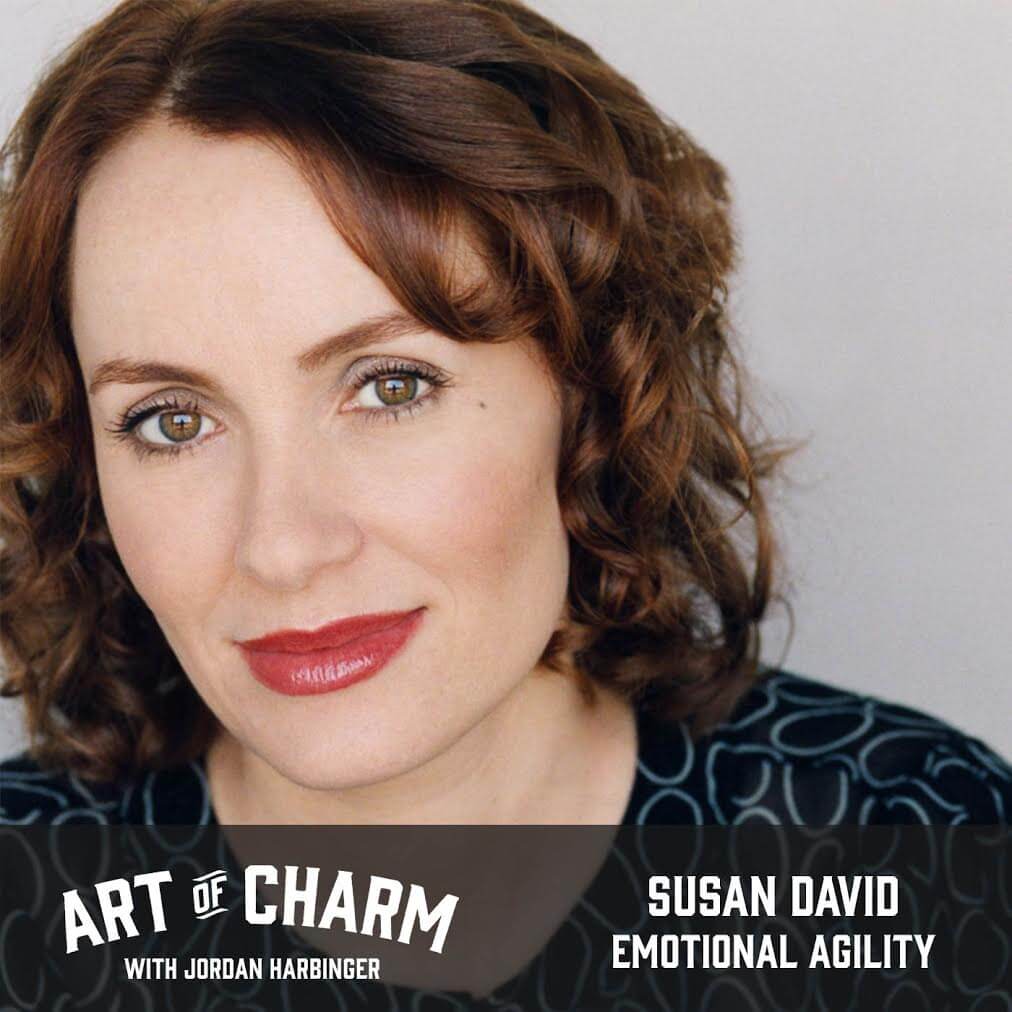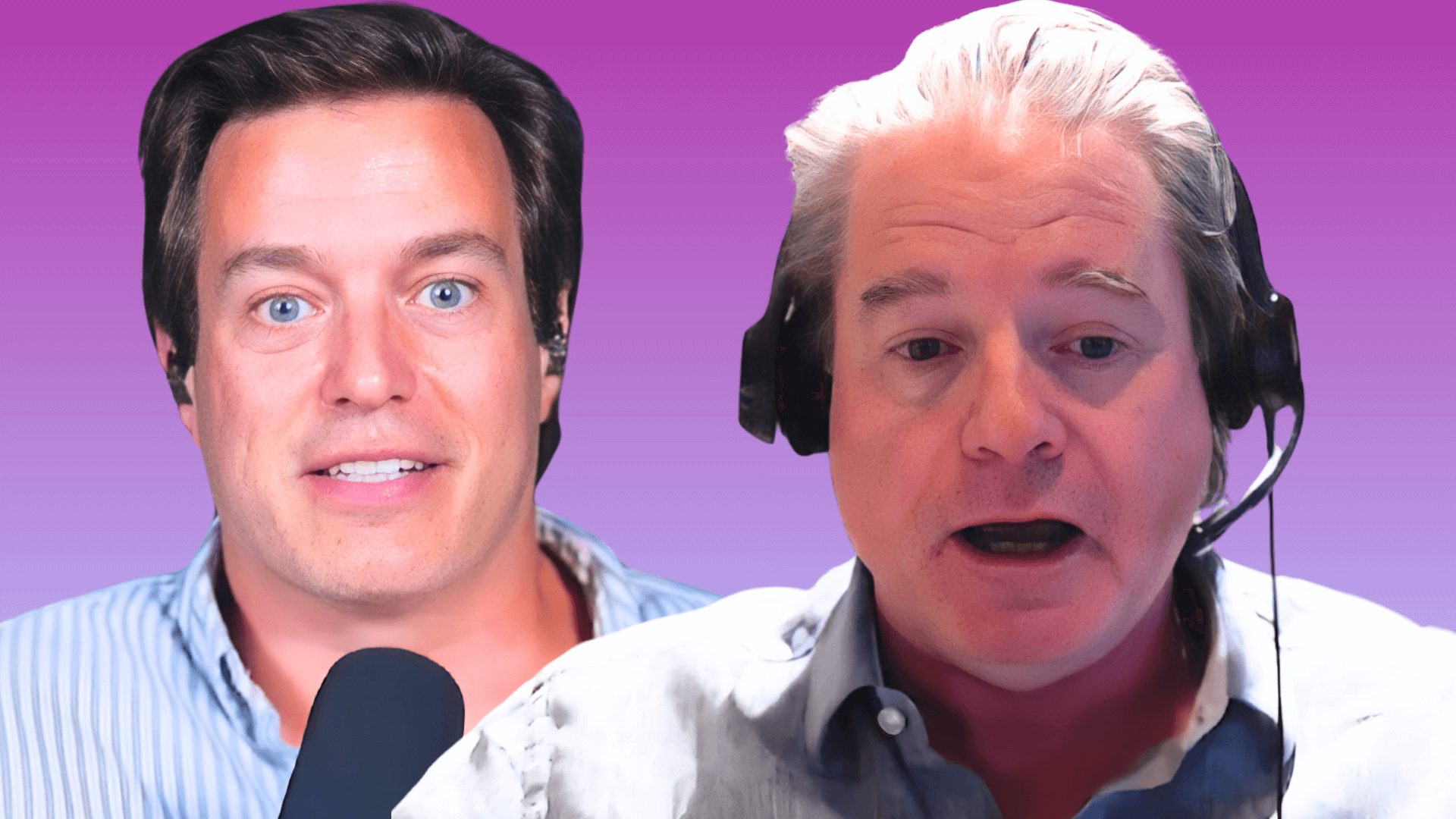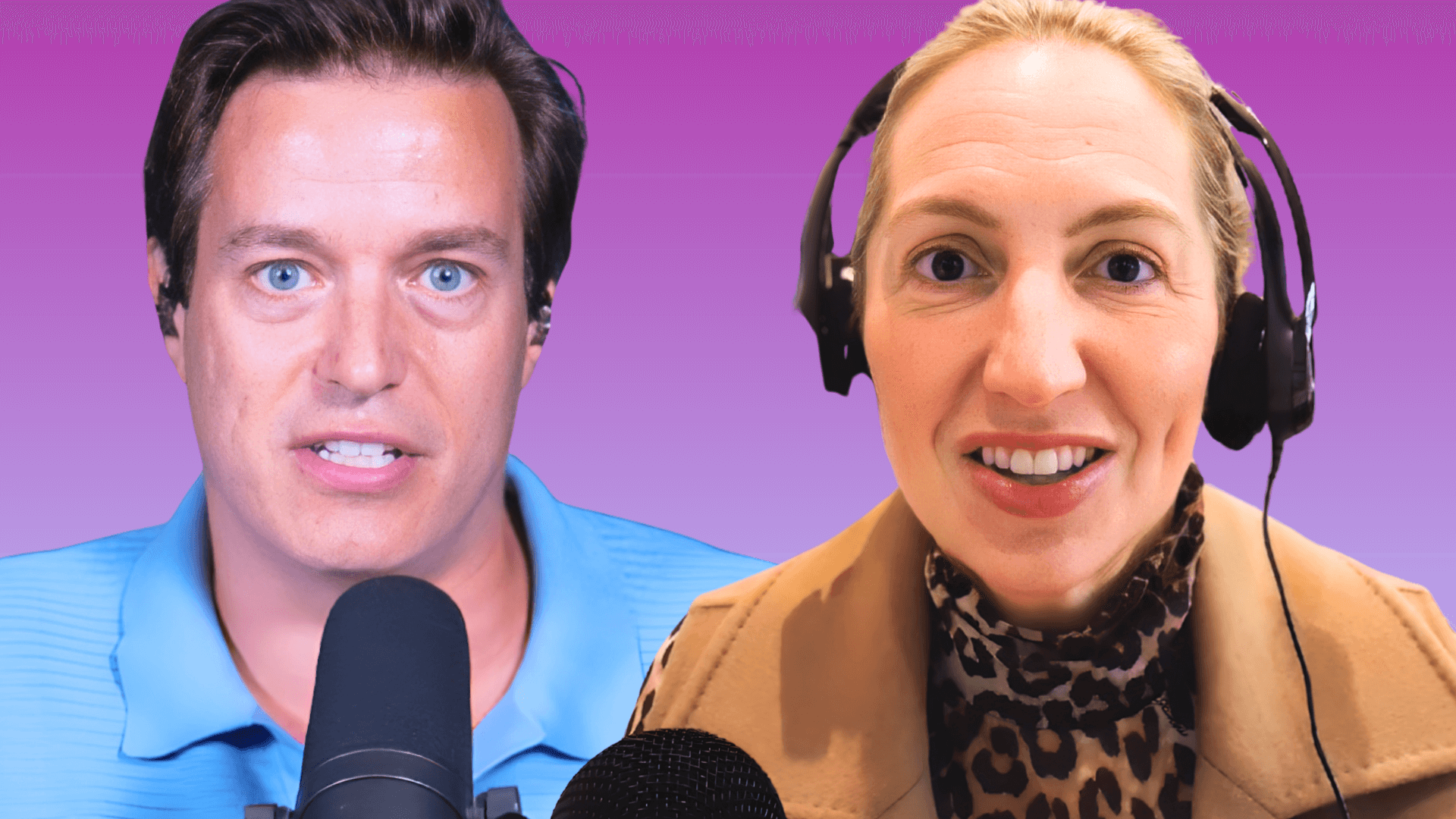Susan David (@susandavid_phd) is a psychologist on faculty at Harvard Medical School, co-founder and co-director of the Institute of Coaching at McLean Hospital, CEO of Evidence Based Psychology, and author of Emotional Agility: Get Unstuck, Embrace Change, and Thrive in Work and Life.
“Discomfort is the price of admission to a meaningful life.” -Susan David
The Cheat Sheet:
- What is emotional agility?
- What’s wrong with trying to force ourselves to be happy all the time? Is our society misguided by a tyranny of positivity today?
- Unpleasant and negative emotions actually serve a purpose — but what is that purpose and how can we use it to our advantage?
- How do our thoughts, emotions, and stories hook us into responding ineffectively to life’s challenges, and how can we break these patterns?
- Learn practical ways to develop our responses to adversity that leave us stronger and more capable.
- And so much more…
[aoc-subscribe]
Do we let our self-doubts, failings, shame, fear, or anger hold us back, or can we be determined, persevering toward key life goals with the insight and courage to recognize when these goals are not serving us, and adapt?
In this episode, Harvard psychologist Susan David joins us to talk about her new book Emotional Agility: Get Unstuck, Embrace Change, and Thrive in Work and Life, which helps us navigate life’s twists and turns with insight according to our values rather than knee-jerk “hooks” in which our thoughts, emotions, or stories drive our behavior. Listen, learn, and enjoy!
Please Scroll down for Full Show Notes and Featured Resources!
More About This Show
What is emotional agility? Susan David, author of Emotional Agility: Get Unstuck, Embrace Change, and Thrive in Work and Life sums it up:
“Emotional agility is the set of skills that we, as human beings, need in order to deal with ourselves and others in a way that’s healthy. It enables us to respond effectively to the challenges that life throws at us.”
Most of us know too well the consequences of responding ineffectively when life throws us challenges; Susan breaks these down into four “hooks.”
The Four Hooks
“There’s nothing wrong about having a so-called negative thought,” says Susan. “There’s nothing wrong about having sadness or anxiety. We live in a world that tells us the opposite. We live in a world that tells us we should be happy all the time. But in fact, these emotional experiences are normal. However…what often happens is we get hooked by our thoughts, our emotions, our stories. What I mean by a hook is where our thoughts — for instance, ‘I’m not good enough,’ or ‘I’m just not cut out to do X’; an emotion — things like sadness or disappointment, ‘What’s the point?’ pessimism; or even a story — a story that might have been written on our mental chalkboards in grade three about who we are and what we deserve in life.
“Sometimes what happens is we get tied to those so strongly that they start to dominate our actions. So we won’t put our hand up for a project. We won’t explore intimacy in a relationship. And this is where our thoughts, our emotions, and our stories hook us. They drive our actions in a way that takes us away from our values.” These are the four hooks she identifies:
- Thought-blaming: “This is when we essentially treat our thoughts as fact and we blame our thoughts for our actions,” says Susan. “So we might say something like, ‘I had the thought that I wasn’t going to get the job, so I didn’t apply for it.’ What you’re seeing here is a person believing a thought and acting in a way as if that thought is true.” But it’s important to remember that thoughts don’t cause behavior — we do.
- Monkey-mindedness: If you’ve ever planned out entire interactions and imagined responses that haven’t even happened yet and exhausted yourself in the process, you’ve experienced this hook. “We give power to our thoughts in a very particular way that stops us from being…present in the world,” says Susan. “We basically get so broody within our mind about what it is the [other] person is feeling or saying or what we’re thinking or what we could have said to the person that we are not actually present with them — connected with our thoughts and emotions and with the situation in a way that’s helpful.”
- Old, outgrown ideas: Just as you can’t waltz into an apartment you vacated years ago with the key you used to use because the lock’s been changed (provided the landlord is the responsible sort), old patterns that may have worked for you in the past won’t always apply to new situations. “You see people who have a story; it’s a story about what helps them or helped them at some point to be effective in the world,” says Susan. “So it might be in [someone’s] previous job the way to get ahead was to be very conniving…then the person goes into a new environment where that new context actually demands something very different. Yet the story that they have about how to get ahead and how to survive persists.”
- Wrongheaded righteousness: Sometimes we can’t get over the idea of being proven right — at any cost. Arguments can literally drag on for years when a party who feels wronged keeps dredging up a tired issue for the purpose of being vindicated — sometimes to the point that nobody can remember what sparked the original disagreement or misunderstanding in the first place. Susan says this embodies the classic phrase “cutting off your nose to spite your face.”
Developing emotional agility helps us overcome these hooks — not by ignoring them and pretending we’re always happy and that everything is fine — but by identifying and accepting them even when they’re unpleasant and being willing to break the retreaded patterns that no longer serve us.
“People who become overly focused on becoming happy — what we know from the research — is that they become paradoxically more unhappy over time,” says Susan. “There’s almost this idea that they set expectations about what their lives should be about and yet the reality is that life’s beauty is inseparable from its fragility. We are baked into a contract with life that has difficulty — that has bad experiences. So when we become overly focused on happiness, we don’t allow for the reality of life as it is.”
In short, expecting happiness at every turn is a surefire recipe for repeated disappointment because life is never going to be perfect.
“The second key issue around this focus on happiness is it leads us into unhealthy relationships with ourselves,” says Susan. “Imagine you are experiencing disaffection or disengagement in the workplace. This is something you are experiencing, and if you’re someone who then says, ‘I’ve just got to be positive; I’ve just to grit through it; I’ve just got to keep on with it,’ what you are doing is you are shutting down a key resource in your life, and that resource is that our emotions — all of our emotions: our sadness, our dissatisfaction, our disaffection, our anxiety — are part and parcel of the way that we as human beings have of communicating with ourselves.”
Rejecting the negative emotions we feel and trying to fake happiness is like telling ourselves the red light signaling us to stop at an intersection is actually green: sooner or later, a crash is inevitable. We can’t grow (or get to the other side of town) if we ignore what the warning signs are trying to communicate.
Listen to this episode of The Art of Charm in its entirety to learn more about the value of processing our difficult emotions with agility and letting them inform the decisions we make that lead to change rather than clumsily sweeping them under the rug, how unpleasant emotions act as beacons reminding us of our values, ways our society has become misguided by a pervasive tyranny of positivity, how we can avoid dwelling on the uncomfortable emotions as we spend more time with them, and lots more.
Make sure to take Susan’s free Emotional Agility quiz here! Over 60,000 people have taken this free, five-minute assessment. The answers are analyzed and respondents receive a ten-page personalized report that describes their various Emotional Agility strengths and development areas.
THANKS, SUSAN DAVID!
If you enjoyed this session with Susan David, let her know by clicking on the link below and sending her a quick shout out at Twitter:
Click here to thank Susan David at Twitter!
Click here to let Jordan know about your number one takeaway from this episode!
Resources from This Episode:
- Free Emotional Agility quiz
- Institute of Coaching at McLean Hospital
- Susan David’s website
- Susan David at Facebook
- Susan David at Instagram
- Susan David at Twitter
- Man’s Search for Meaning by Viktor E. Frankl




